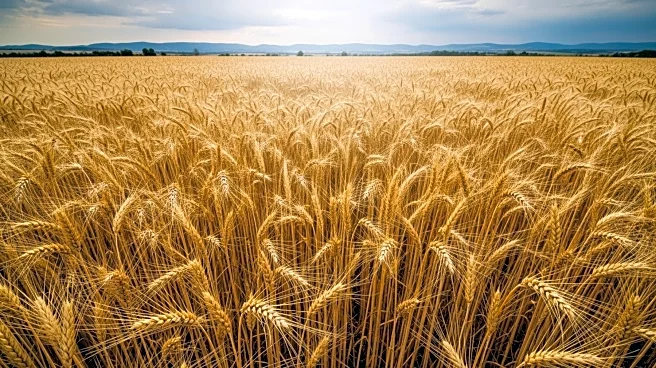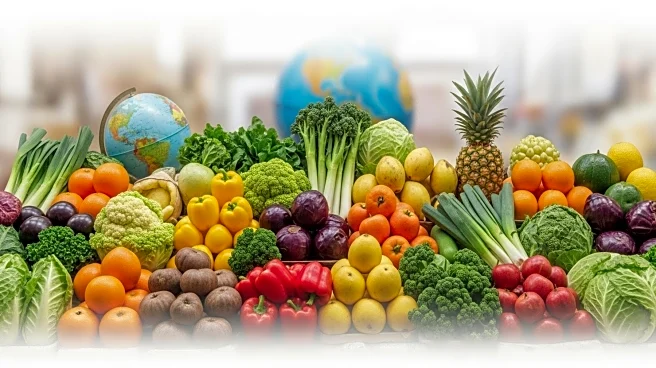What's Happening?
Grain and oilseed prices have been experiencing minimal volatility, described as 'watching paint dry,' due to a combination of factors including harvest pressure, government shutdown uncertainty, trade wars, and ample supplies. December corn futures are trading near $4.20, with little movement beyond 15¢ for several weeks. Soybeans have been trading within a $1 range for a year, recently fluctuating within a 50¢ pattern. Wheat futures have also seen a gradual slide, moving within a 20¢ range over the last two months. Variable yield results suggest that recent USDA yield estimates may be too high, contributing to historically low prices. Rising input costs make corn, soybeans, and wheat attractive to end users.
Why It's Important?
The current low prices in grain markets are significant as they often precede a price recovery. As demand builds, the need to increase supplies can lead to price increases. While some recoveries are shallow, others can be sharp due to supply disruptions, such as reduced acres or weather concerns. The prolonged sideways movement in prices can be stressful for producers, who may rely on hope as a strategy, while end users might become complacent. This period offers end users an opportunity to secure long-term supplies at or below production costs, potentially mitigating future price appreciation risks. Producers are encouraged to prepare for potential price rallies by employing strategies like negotiating basis contracts or using fixed-risk tools.
What's Next?
Producers and end users are advised to plan and execute strategies for the grain they are producing this year and next. This involves calculating risks, measuring data, and making informed decisions rather than reacting emotionally to market dynamics. Regularly revisiting strategies to adapt to changing conditions is crucial. Working with professionals to find suitable strategies for individual operations can help navigate the complexities of the market. The expectation is that prices, currently treading water, will eventually change, necessitating preparedness for potential market shifts.
Beyond the Headlines
The ethical and strategic dimensions of grain market movements highlight the importance of disciplined decision-making in agriculture. Producers must balance immediate financial pressures with long-term planning to avoid exacerbating poor situations. The cultural aspect of farming, where hope often drives decisions, underscores the need for strategic foresight and professional guidance to ensure sustainable operations.











